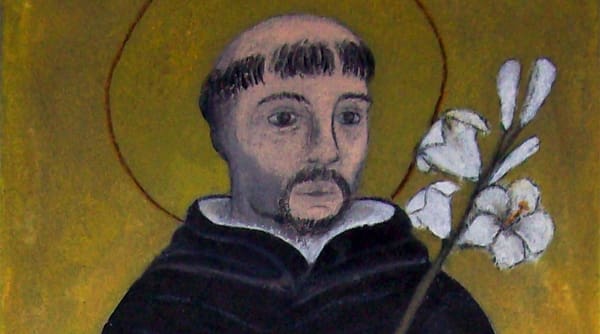Saint Dominic’s Nine Ways of Prayer
A Summary
Memorial of Saint Dominic
“left nowritings on prayer, but the Dominican tradition has collected and handed down his living experience in a work called: ‘The Nine Ways of Prayer of St Dominic’… and each one — always before Jesus Crucified — expresses a deeply penetrating physical and spiritual approach that fosters recollection and zeal. The first seven ways follow an ascending order, like the steps on a path, toward intimate communion with God, with the Trinity…the last two positions… correspond to two of the Saint’s customary devotional practices. First, personal meditation…Then come his prayers while travelling from one convent to another. He would recite Lauds, Midday Prayer and Vespers with his companions, and, passing through the valleys and across the hills he would contemplate the beauty of creation. A hymn of praise and thanksgiving to God for his many gifts would well up from his heart, and above all for the greatest wonder: the redemptive work of Christ…St Dominic reminds us that prayer, personal contact with God is at the root of the witness to faith which every Christian must bear at home, at work, in social commitments and even in moments of relaxation; only this real relationship with God gives us the strength to live through every event with intensity, especially the moments of greatest anguish. This Saint also reminds us of the importance of physical positions in our prayer. Kneeling, standing before the Lord, fixing our gaze on the Crucifix, silent recollection — these are not of secondary importance but help us to put our whole selves inwardly in touch with God…the need, for our spiritual life, to find time everyday for quiet prayer; we must make this time for ourselves…to have a little time to talk with God. It will also be a way to help those who are close to us enter into the radiant light of God’s presence which brings the peace and love we all need.”
These ways of prayer were written by an anonymous author, possibly a Dominican friar, who had most probably received this information from a Sister Cecelia of the Monastery of St. Agnes at Bologna (who had personally received the habit from Saint Dominic) and other people who had known him personally.
And, now a short summary of The Nine Ways of Prayer:
The Nine Ways of Prayer of St. Dominic presume a connection between the body and the soul, devotion and prayer. Each of the ways speaks to the importance of what is called “vocal” prayer. Such prayer goes beyond words that are said out loud. Bodily though it is, such prayer reaches for that true and total spiritual worship advocated by St. Paul in Romans 12:1-2. It takes up gestures of the body which move the soul with devotion so that the grace-filled and Holy Spirit imbued soul might move the body in true worship to make Christ-like sacrifices of love:
- The bowing of one’s head and heart with humility at the beginning of prayer before the crucifix, at the altar, in the Name of the Trinity;
- The throwing down and prostrating of one’s whole body with tears of compunction for the sins of others when one can find no more tears for his own;
- The welcoming of all the physical difficulties and the patient endurance of all kinds of bodily discomforts during prayer as part of prayer itself, as a way of offering one’s body to God in praise;
- The fixating of one’s gaze on Christ crucified while kneeling and standing with bold petitions filled with confidence in the indescribable goodness of God and sober acceptance of one’s own weakness;
- The raising of one’s hands to heaven with eyes wide open in the ancient orans of the first Christians;
- The stretching out of one’s arms cruciform with a cry for help in heartbreaking situations;
- The standing strong with hands folded in prayer like an arrow shot into the heart of God;
- The sitting in holy reading and contemplation – that ancient practice of lectio divina; and
- The frequent quest for solitude in which one resists fantasies and evil thoughts like flies and prepares for spiritual battle against diabolical malice by the sign of the Cross.
+
Art: San Domenico di Guzmán affresco in un Pilone votivo di Cantarana (Saint Dominic Guzmán in a shrine of Cantarana), Marco Ferrero, November 2007, CCA 3.0 Unported, Wikimedia Commons.





